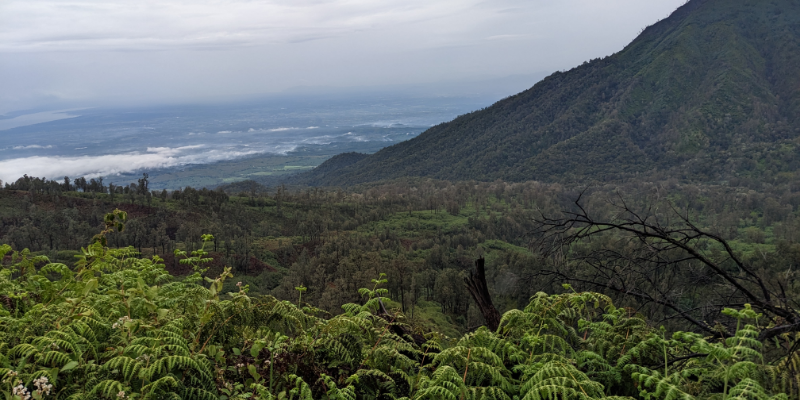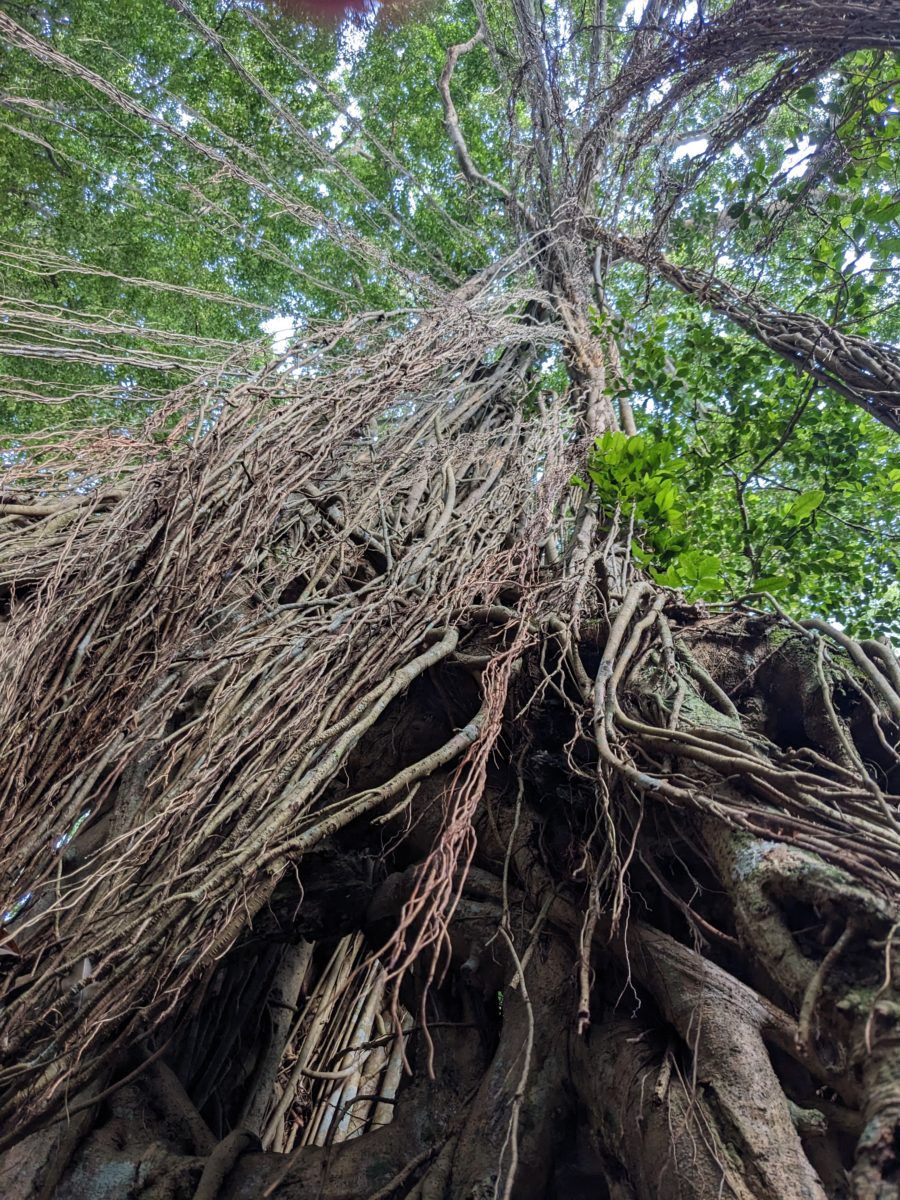Making sense of our connected world

Digital technology for rainforest protection in Indonesia: disturbances, revitalisation and resilience
Rainforests provide essential ecosystem services and livelihoods to hundreds of millions of people across the globe and are key to achieving Sustainable Development Goal 15. However, they are also constantly under threat from climate change and deforestation and degradation. Digital technology might offer solutions to help protect rainforests, but solutions to what exactly, and what are its limitations? To address these questions, this blog post takes a closer look at the role of technology in preparing for rainforest protection, how it is used to respond to disturbances, and how it can be used to restore and revitalise nature on the ground. This can range from the simple digitisation of pen and paper data collection tools to the use of satellite imagery and specialised soft- and hardware.
Introduction
Rainforests store up to 55% of all above-ground carbon, and Indonesia has the third largest rainforests in the world. However, like elsewhere, Indonesian rainforests are constantly under threat from climate change in the long-term, but also especially from people seeking to convert rainforests in support of land uses, particularly palm oil, that deliver more immediate and tangible benefits. In a recent working paper we explored the climate change – technology – rainforest protection nexus through the lens of resilience. It shows that technology is mostly used to provide information to stakeholders such as conservation organisations and the Government of Indonesia. This information helps them to better understand, monitor, and prepare for ‘fast onset disturbances’ such as forest fires or illegal logging which can take place suddenly.
Less attention is paid to technology that can (help to) directly respond to these disturbances that threaten rainforests, and research and practice on using technology to restore and revitalise rainforests is still in its infancy. Moreover, the impact of climate change as a slow-onset disturbance (meaning its impacts take a lot of time to become visible) on the resilience of rainforests is also hardly being explored. This is despite the importance of understanding both slow- and fast-onset disturbances in pursuit of SDG15 – a goal established by the United Nations seeks to protect, restore, and promote rainforests. The figure below shows how entangled the processes affecting rainforests are and thus highlights the need to look at rainforest protection holistically.
Preparing for rainforest protection
Key technologies that stakeholders use to monitor rainforests are standardised digital data collection tools, acoustic monitoring and camera traps, remote sensing and drones, and geo-tracking. Using technology for preparedness is important because it is much more (cost-) effective to prevent disturbances than to respond to and recover from them. Remote sensing in particular made monitoring rainforest coverage much more effective and affordable as it makes it possible to have (daily) high-resolution images of forest coverage reducing the need for manual mapping of coverage. The emphasis of monitoring technology is on immediate threats to rainforests rather than long-term threats such as climate change. However, not all local-level actors involved in rainforest protection have the capacity to use all available technology, so there are concerns around the accessibility of data and information. Further compounding the difficulties in moving from information to action is that there are many actors involved in responding to threats, and it can be challenging to respond timely and effectively to identified threats.

Responding to disturbances
Key technologies used to respond to disturbances to rainforests are acoustic monitoring, drones, and remote sensing and geo-tracking. These technologies facilitate more effective responses by informing responders in real-time about where the disturbances take place. Acoustic monitoring and remote sensing technology can automatically alert designated contacts about events that need closer inspection – for example by sending conservation managers an alert when the sound of a chainsaw is detected. A challenge across all these technologies is that, especially in very remote areas, it can be difficult for humans to act quickly to identified disturbances, so the effectiveness of technology is constrained by the physical environment. Furthermore, not all (local level) stakeholders have the capacity to effectively utilise the available new technology and respond accordingly, and more time is needed for technology to ‘trickle down’ and become widely adopted. Companies developing new innovations like the geo-tracking of products meanwhile try to create incentives for people to sustainably use forest resources and as such seek to reduce the number of fast-onset disturbances such as illegal logging. The idea is that if companies can prove their (timber) products are harvested sustainably, they can fetch better prices for their products and are thus discouraged from undesirable practices.
Restoring and revitalising rainforests
Using technology for the restoration and revitalisation of rainforests appears to still be in its infancy, with remote sensing and drones being identified as the most promising means. Remote sensing can help identify the most effective places for restoring or replanting of rainforests, which is important in a context with limited resources and competing priorities. For example, peat swamp forests are particularly effective carbon stores, so maintaining or restoring their health might be something which governments and conservation actors need to prioritise. Drones have been used to disperse seeds thereby contributing to forest (re)growth, though there are concerns about the scalability of this approach. Given the importance of providing sufficient economic incentives to the right stakeholders to protect rainforests, technology can also be helpful in bringing down the costs for restoration and revitalisation.
Looking forward: Using digital technology for rainforest protection
When looking across the evidence, a key emerging insight is that big steps need to be made to progress from data availability to data accessibility. Especially smaller conservation actors in Indonesia struggle to effectively utilise available data. Moreover, the focus on how fast-onset disturbances affect rainforests needs to be balanced by more efforts to understand how slow-onset disturbances such as climate change will impact rainforests. Finally, given the continuous threat of deforestation and degradation, there is a need to invest in technology that can help to restore and revitalise rainforests and thus to help achieve SDG 15.
About the author and the project
This blog post is based on a report written by Roeland Hemsteede and Pragya Pokharel and commissioned by the Humboldt Institute for Internet and Society (HIIG), as part of the project “Sustainability, Entrepreneurship and Global Digital Transformation (SET)“. The authors investigate the challenges, application, and potential of digital technology for rainforest protection using Indonesia as an example.
Find the full working paper, including details on methodology and consulted literature, here.
Listen to SET’s podcast episode of our Exploring Digital Spheres series (S02 E04) on the topic here.
This post represents the view of the author and does not necessarily represent the view of the institute itself. For more information about the topics of these articles and associated research projects, please contact info@hiig.de.

You will receive our latest blog articles once a month in a newsletter.


